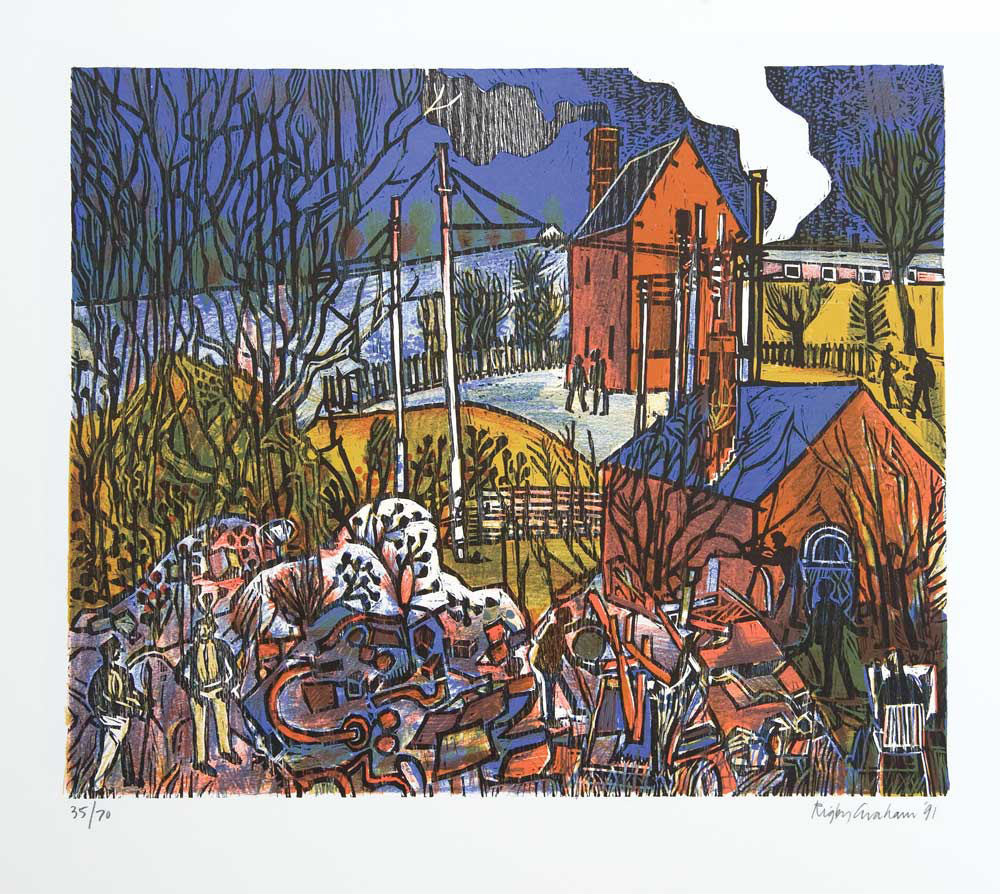Newcomen’s Engine, 1991
Rigby Graham, MBE (1931-2015)

In 1712 Thomas Newcomen built the first successful steam engine in the world which was used for pumping water from coal mines on Lord Dudley’s estates.
The ‘fire engine’ as it was known, is an impressive brick building from which a wooden beam projects through one wall. Rods hang from the outer end of the beam and operate pumps at the bottom of the mine shaft which raise the water to the surface. The engine itself is simple, with only a boiler, a cylinder and piston and operating valves. A coal fire heats the water in the boiler which is little more than a covered pan and the steam generated then passes through a valve into the brass cylinder above the boiler. The cylinder is more than 2m long and 52cm in diameter. The steam in the cylinder is condensed by injecting cold water and the vacuum beneath the piston pulls the inner end of the beam down and causes the pump to move.
Thomas Newcomen was an ironmonger by trade and a Baptist lay preacher by calling. After 1710 he became the pastor of a local group of Baptists. He was born in Dartmouth, Devon, England, to a merchant family and baptised at St. Saviour’s Church on 24 February 1664. In those days flooding in coal and tin mines was a major problem, and Newcomen was soon engaged in trying to improve ways to pump out the water from such mines. Newcomen died at Wallin’s house in 1729, and was buried at Bunhill Fields burial ground on the outskirts of the City of London near to where Susanna Wesley is buried.
Rigby Graham was one of the twentieth century’s most skilful exponent of woodcuts. In this scene a sense of the passage of time is conveyed through the cutting down of trees to fire the boiler. The technology leaves a mark also on the social landscape. Those who own the means of production are depicted in detail whereas the labourers are described only in anonymous silhouettes.
The work was given to the College by the Goldmark Gallery in 2017.



